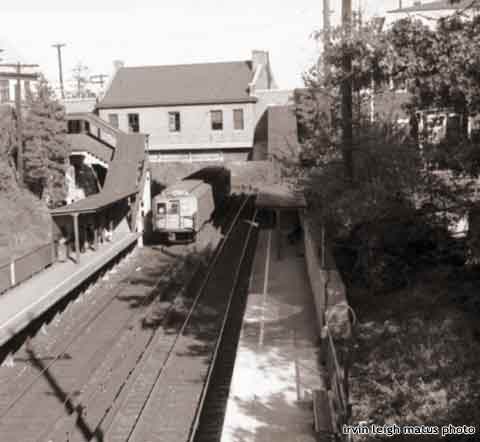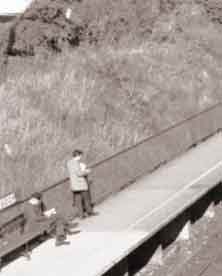
Page 11



Base service on the SIRT consisted of half-hourly trains to Tottenville interspersed with Great Kills Locals, providing quarter-hourly service to that point. One of these short-line runs pulls into Great Kills in the summer of 1965.
During World War II the SIRT was a sound company, its ridership and revenues holding up well as gasoline became scarce. With the promise of the post-war transit boom it seemed the railway might become a quaint, efficient part of the community.
The St. George Terminal Fire
On June 25, 1946, at 1:58 p.m., J. V. Donovan, approaching the St. George terminal on his way to work, noticed flames coming from the terminal and promptly turned in an alarm. Four minutes later the fifty-year-old terminal, made 90% of wood, was all in flames.
Just moments before a ferry had left, narrowly averting a disastrous loss of life. The SIRT lost another eight cars, with about the same number damaged. The ticket booth agent did not escape and burned to death.
It had been a popular rumor that a SIRT train shooting off sparks started the fire as it entered or left the terminal. This is doubtful -- the first flames were not sighted near the trains, nor were trains moving through the interlocking at the time. The SIRT was skilled at seat-of-the-pants railroading and disaster recovery and made the best of it.
Initially trains terminated at Tompkinsville until temporary facilities could be prepared. Things did not return completely to normal until the current City-built facility opened in St. George in 1951.
Other trials were to come. On December 26, 1947 the line was hit by the Blizzard of '47, larger than the famous Blizzard of '88, which paralyzed the outdoor operation. But these physical tests were nothing as compared to a different threat -- the SIRT suddenly had competition -- competition with very deep pockets.
Updated
©1965 Silver Leaf Rapid Transit. ©2001 Paul Matus. ©2001 The Composing Stack Inc.